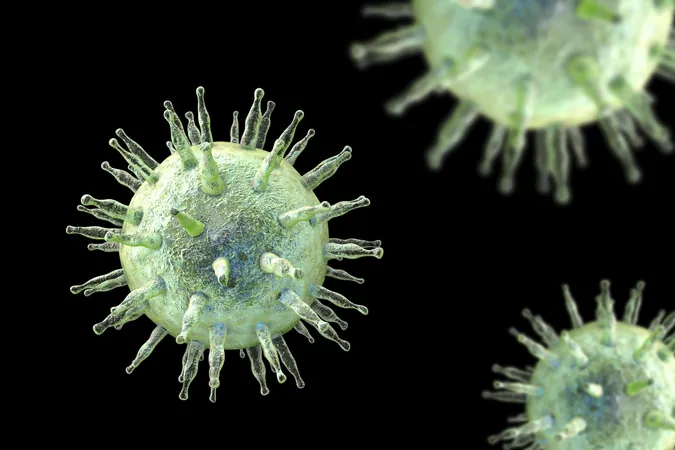
Vision Loss: Could Gene Therapy Be the Game-Changer We’ve Been Waiting For?
2024-10-01
Introduction
In the innovative realm of retinal disease treatment, gene therapy has emerged as a beacon of hope. However, developing effective gene therapy approaches for these diseases demands careful consideration of various critical factors, including delivery systems and routes of administration.
Key Considerations in Gene Therapy
Key factors influencing these decisions encompass the size of therapeutic genes, the specific target retinal cell types, the immune response triggered by the delivery vehicles, and the overall cost-effectiveness. Gene therapy's success hinges on the presence of viable target cells, and its efficacy diminishes as tissue degeneration progresses.
Delivery Systems for Gene Therapy
Gene therapy for retinal diseases typically involves delivering genetic material to the retina through vectors, which are genetically modified agents designed to transport functional copies of mutated genes into the target cells. Although viruses are the predominant choice for vectors, nonviral methods are gaining traction.
Viral Vector Delivery Systems: The Pros and Cons
Genetically modified viruses such as adenoviruses, lentiviruses, and adeno-associated viruses (AAVs) have been employed in treating retinal conditions. While adenoviruses were previously favored, they trigger a robust immune response that leads to their rapid elimination from the body. This drawback has ushered in the growing use of AAVs, which are small, nonpathogenic viruses that pose minimal risk of harmful gene integration. Moreover, AAVs can facilitate long-term gene expression in non-dividing retinal cells due to their mild immune responses.
However, one limitation of AAV vectors is their restricted capacity for genetic material; this challenge can be tackled using dual AAV vectors or exploring lentiviral vectors, which can accommodate more genetic information and integrate into the host genome. While lentiviruses show promise, their integration poses safety risks and may not effectively target photoreceptor cells, which are especially vulnerable in inherited retinal diseases.
Nonviral Approaches: A Cost-Effective Alternative
Nonviral gene therapy delivery systems, including nanoparticles and liposomes, hold promise for administering larger DNA molecules and may be more economically viable for large-scale production. Direct methods, such as utilizing ultrasound or electric pulses to transiently permeabilize cell membranes, also show potential. Unfortunately, introducing genetic material nonvirally often leads to short-lived expression due to degradation by enzymes.
Inherited Retinal Diseases: Challenges and Progress
Inherited retinal diseases, which stem from mutations across more than 300 identified genes, present an array of challenges. Nevertheless, recent advancements in gene therapy offer hope for conditions previously considered untreatable. Animal studies have been instrumental in deciphering the genetic underpinnings of these diseases, which has in turn fostered the creation of gene therapies.
Promising Clinical Applications
Among these therapies, one notable success story is the development of Luxturna (voretigene neparvovec-rzyl), approved by the FDA in 2017 for treating RPE65-associated Leber congenital amaurosis (LCA). Clinical trials demonstrated sustained visual improvements through the introduction of a functional RPE65 gene, highlighting the potential for gene therapy.
Further exciting developments have emerged from recent phase 1/2 clinical trials focusing on GUCY2D and RLBP1 mutations, both of which have shown encouraging improvements in visual function. The GUCY2D gene is crucial for photoreceptor adaptation to varying light conditions, while RLBP1 is vital for adjusting to light intensity changes. Positive responses in these trials have set the stage for larger studies.
Future Directions for Acquired Retinal Diseases
Acquired retinal diseases, including glaucoma and age-related macular degeneration, pose another dimension of challenge. Estimates suggest that over 200 million people globally suffer from age-related macular degeneration alone. Current treatments like anti-VEGF injections offer some respite but come with limitations in terms of frequency and cost.
Gene therapy is being explored as a means to provide longer-lasting treatments for these conditions. For instance, researchers are investigating the potential of gene therapy to modulate the inappropriate growth of retinal blood vessels seen in conditions like wet age-related macular degeneration.
In glaucoma research, gene therapy is being tested to achieve the elusive goal of durable interventions to replace daily treatments. By targeting pathways involved in the pathology of these diseases, gene therapy could offer a single treatment solution instead of continued interventions.
Challenges Ahead and the Future of Gene Therapy
Despite these advancements, concerns about efficacy, safety, and cost remain. Long-term expression of therapeutic genes could lead to adverse effects, while the complex manufacturing process for vectors poses additional hurdles. The requirements of genetic mutation identification present logistical challenges, particularly in developing countries where such diagnostics may not be accessible.
However, the future remains promising. With numerous clinical trials ongoing, the development of modifier gene therapies could serve as a revolutionary strategy for treating both inherited and acquired retinal diseases. Experts predict that, over the next five years, we may witness the arrival of new gene therapies for various causes of vision loss, making gene therapy one of the most exciting areas in the treatment of ocular diseases today.
As researchers continue to innovate and push the boundaries of what's possible, the moment may soon come when gene therapy transitions from being a status of hope to a reliable treatment for retinal diseases, potentially changing the lives of millions around the world.



 Brasil (PT)
Brasil (PT)
 Canada (EN)
Canada (EN)
 Chile (ES)
Chile (ES)
 España (ES)
España (ES)
 France (FR)
France (FR)
 Hong Kong (EN)
Hong Kong (EN)
 Italia (IT)
Italia (IT)
 日本 (JA)
日本 (JA)
 Magyarország (HU)
Magyarország (HU)
 Norge (NO)
Norge (NO)
 Polska (PL)
Polska (PL)
 Schweiz (DE)
Schweiz (DE)
 Singapore (EN)
Singapore (EN)
 Sverige (SV)
Sverige (SV)
 Suomi (FI)
Suomi (FI)
 Türkiye (TR)
Türkiye (TR)